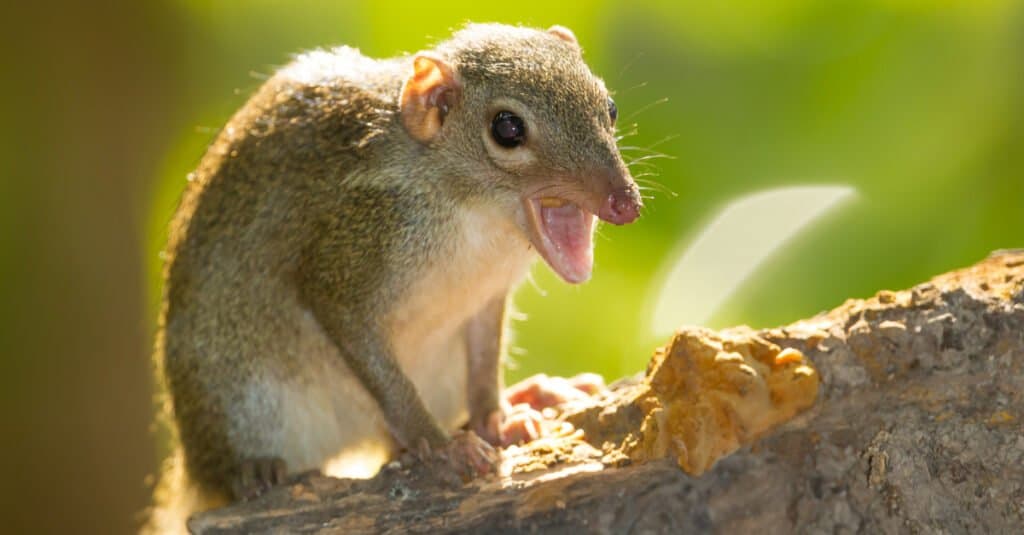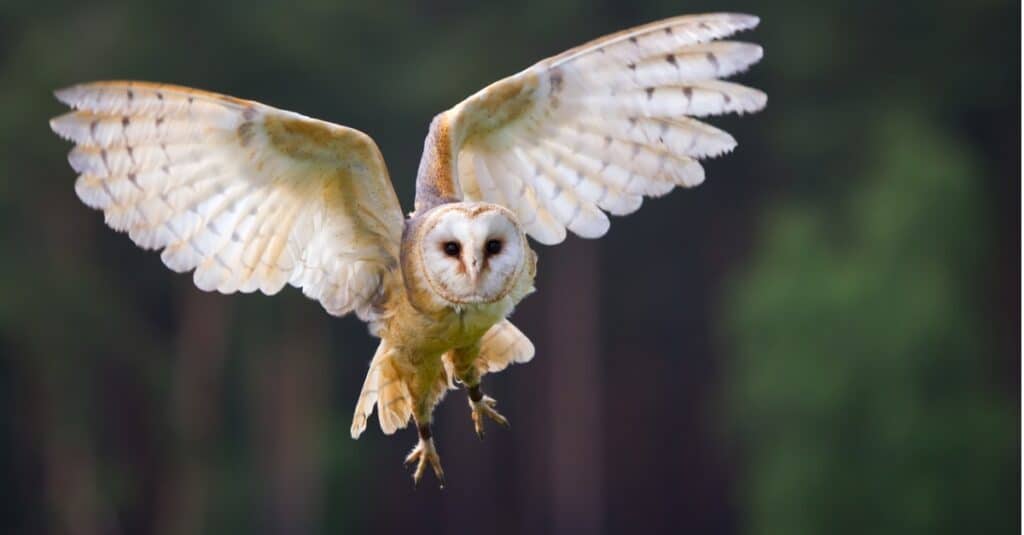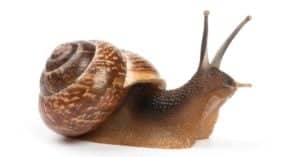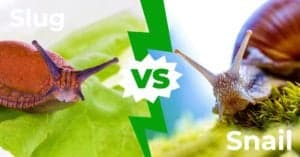Snails are invertebrates and can be found pretty much anywhere. They live both on land and in the sea and are available as meals for several carnivores ranging from rats and beetles to fish and other snails. The list of what eats snails is quite lengthy, even though snails have a protective shell, unlike their slug buddies.
In this article, you’ll find more about predators who keep snails high on their food chain.
What Eats Snails?

Fish, shrews, and crabs are snail predators.
©Alexandr Jitarev/Shutterstock.com
Beetles, shrews, fish, snakes, birds, crabs, and rats eat snails. For the most part, a retreat into its shell will not save a snail from a hungry toad or rat. They could get crushed or even swallowed whole. Now, let’s take a look at each of these snail hunters.
Snail Predators: Beetles
Beetles are flightless insects that feast on plants, ants, fruits, snails, and slugs. Adult beetles lay their eggs close to where their prey lives. The beetle larvae do most of the hunting, crawling under logs and plants to find snails. Although slugs are easier prey since they don’t have shells, beetles use their long mouthparts to reach in and devour snail meat. Hibernating snails are not safe from them either. The larva uses its jaws and saliva to bore into the shell and might take up residence in it while feasting on the snail. Ground beetles, in particular, are known for preying on snails.
Snail predators: Shrew

Due to their high metabolism rate, shrews frequently eat creatures like snails and slugs.
©kajornyot wildlife photography/Shutterstock.com
Shrews have a high metabolism rate, which means that they need to eat as often as they can. They live underground, which gives them access to prey on various bugs and insects. They also have long snouts that contain sharp teeth to tear and eat their food. Shrews always help themselves to slimy creatures like worms, slugs, and snails. They locate their prey by using their sense of smell and touch. They frequently come up to the surface in search of whatever insect they can find, including small mice and unsuspecting snails.
Snail Predators: Fish
Sea snails often fall prey to different types of fish. The Yoyo Loach has a talent for digging sand at the bottom of the sea. They suck them out of the shell when they catch snails and chew the meat. The Clown Loach also has a reputation for being fond of snails. They love to hunt snails in their burrows. Goldfishes are also snail predators. They usually hunt for small or medium-sized snails that fit in their mouths. Like most fish, betta fish avoid adult snails because of their size. Smaller snails are easier prey since they can suck out their flesh with little effort. Gourami fish also possess strong jaws and tear out snails from their shells.
Snail Predators: Snakes
Although it is a little unusual, some snakes have adapted snails to their diet. Snail-eating snakes are native to tropical forests worldwide, including Southeast Asia and South America. Snail-eating snake diversity is linked to the wide availability of snails and slugs in the tropics.
Snails thrive in tropical rainforests and can be found crawling on the ground or hiding under shrubs and logs. Snail-eating snakes can work their mandibular much more flexibly to extract a snail from its shell and eat it.
Snail Predators: Birds

Because snails serve as a source of dietary calcium for birds, owls eat them.
©iStock.com/M-Reinhardt
Both domestic and wild birds eat snails. This is because snails serve as a source of dietary calcium for birds. And birds rely on calcium sufficiency to produce high-quality eggs for reproduction. So, it is widespread for thrushes, crows, hawks, and owls to eat snails. Herons and ducks are also fond of enjoying any snails they come across.
On the other hand, snail kites are specialized snail hunters as their diet primarily consists of apple snails. Most birds do not take on snails that are too big to swallow. So, small birds rely on smaller snails while larger birds like owls and hawks can feast on giant snails. Song thrushes are particularly enterprising and will smash big snails against rocks so that they can swallow them.
Snail Predators: Crabs
Crabs are opportunistic hunters who prey on snails both on land and in the sea. For most crabs, a snail is both a source of nutrition and a home. Some crabs will kill snails so that they can live in their shell. They also have a large appetite for clams, slugs, and other mollusks. Like sea snails, marine crabs spend their time at the bottom of the sea. Because of this, they often prey on snails, which supply their dietary protein requirement.
Snail Predators: Rats
Usually, rats scavenge for food. They can eat almost anything, whether it is vegetation, insects, or snails. Hungry rats can even eat dead animals. Garden snails, in particular, are at risk of being devoured by mice and rats. Generally, rats like to live close to their source of food. For example, roof rats often nest and live close to areas with a good supply of snails. They have teeth to crack small snail shells and eat the leftover.
Snail Predators: Other snails
Cannibalism is not unusual among snails. In fact, predatory sea snails, like cone snails and moon snails, are fond of smaller animals, including other snails. The cone snail is venomous, and it injects this venom into its potential meal, typically a smaller snail. Moon snails usually bury themselves in the sand and attack smaller snails that come within reach. They then drill a hole into the snail using their snout and draw out the yummy meat.
Snail Predators: Toads
Toads are predators with huge appetites. They can swallow any living animal around when hungry, including frogs, newts, ants, slugs, and snails. Since snails are naturally slow, they are no match for the swift tongue of a toad or even a frog. Toads swallow snails with the shell – their digestive system breaks down the snail, and they pass out the shell. Typically, toads will only attack snails that are their size and not larger adults.
Snail Predators: Salamanders
Salamanders are animals who look like lizards, although they do not have any scales. Their diet is primarily carnivorous, so they rely on hunting meat. Usually, they prey on smaller insects, some types of fish, and other salamanders. They, however, prefer slow-paced animals like snails and slugs. They rely primarily on their teeth to tear small snails from the shell. Some of them are aquatic and prey on sea snails, depending on whether they can take on their size.
A List of Animals that Eat Snails
- Beetles
- Shrew
- Fish
- Snakes
- Birds
- Crabs
- Rats
- Other snails
- Toads
- Salamanders
The photo featured at the top of this post is © iStock.com/Daniela Schröder
Thank you for reading! Have some feedback for us? Contact the AZ Animals editorial team.






